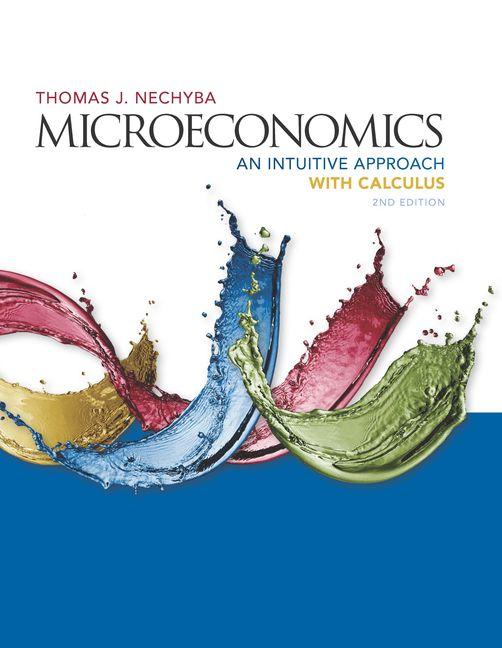Question
Problem 7-14 Portfolio risk Hyacinth Macaw invests 66% of her funds in stock I and the balance in stock J. The standard deviation of returns
Problem 7-14 Portfolio risk
Hyacinth Macaw invests 66% of her funds in stock I and the balance in stock J. The standard deviation of returns on I is 10%, and on J it is 26%.(Use decimals, not percents, in your calculations.)
a.Calculate the variance of portfolio returns, assuming the correlation between the returns is 1.(Do not round intermediate calculations. Round your answer to 4 decimal places.)
Portfolio variance
b.Calculate the variance of portfolio returns, assuming the correlation is .3.(Do not round intermediate calculations. Round your answer to 4 decimal places.)
Portfolio variance
c.Calculate the variance of portfolio returns, assuming the correlation is 0.(Do not round intermediate calculations. Round your answer to 4 decimal places.)
Portfolio variance
Problem 8-17 Cost of capital
Epsilon Corp. is evaluating an expansion of its business. The cash-flow forecasts for the project are as follows:
YearsCash Flow
($ millions)01601-1040
The firm's existing assets have a beta of 2.0. The risk-free interest rate is 6% and the expected return on the market portfolio is 13%. What is the project's NPV?(Enter your answer in millions. A negative answer should be indicated by a minus sign. Do not round intermediate calculations. Round your answer to 2 decimal places.)
NPV$million
The Treasury bill rate is 4.1%, and the expected return on the market portfolio is 10.7%. Use the capital asset pricing model.
a.What is the risk premium on the market?(Do not round intermediate calculations. Enter your answer as a percent rounded to 1 decimal place.)
Risk premium%
b.What is the required return on an investment with a beta of 1.4?(Do not round intermediate calculations. Enter your answer as a percent rounded to 2 decimal places.)
Required return%
c.If an investment with a beta of .46 offers an expected return of 8.3%, does it have a positive NPV?
NoYes
d.If the market expects a return of 11.0% from stock X, what is its beta?(Do not round intermediate calculations. Enter your answer as a percent rounded to 2 decimal places.)
Beta
Problem 7-2 Standard deviation of returns
The following table shows the nominal returns on U.S. stocks and the rate of inflation.
YearNominal Return (%)Inflation (%)201012.04.020116.83.4201215.72.920137.14.4201444.0.3
a.What was the standard deviation of the nominal market returns? (Do not make the adjustment for degrees of freedom described in footnote 18.)(Use decimals, not percents, in your calculations. Do not round intermediate calculations. Enter your answer as a percent rounded to 2 decimal places.)
Standard deviation%
b.Calculate the arithmetic average real return.(A negative answer should be indicated by a minus sign. Do not round intermediate calculations. Enter your answer as a percent rounded to 2 decimal places.)
Average real return%
Problem 9-2 WACC
A company is 34% financed by risk-free debt. The interest rate is 10%, the expected market risk premium is 8%, and the beta of the companys common stock is .65.
a.What is the company cost of capital?(Do not round intermediate calculations. Enter your answer as a percent rounded to 2 decimal places.)
Cost of capital%
b.What is the after-tax WACC, assuming that the company pays tax at a 30% rate?(Do not round intermediate calculations. Enter your answer as a percent rounded to 2 decimal places.)
After-tax WACC%
Problem 9-20 Fudge factors
An oil company is drilling a series of new wells on the perimeter of a producing oil field. About 24% of the new wells will be dry holes. Even if a new well strikes oil, there is still uncertainty about the amount of oil produced: 40% of new wells that strike oil produce only 1,400 barrels a day; 60% produce 5,400 barrels per day.
a.Forecast the annual cash revenues from a new perimeter well. Use a future oil price of $93 per barrel.(Use 365 days a year. Enter your answer in dollars not in millions and round your answer to the nearest whole dollar amount.)
Expected annual cash revenues$
Step by Step Solution
There are 3 Steps involved in it
Step: 1

Get Instant Access to Expert-Tailored Solutions
See step-by-step solutions with expert insights and AI powered tools for academic success
Step: 2

Step: 3

Ace Your Homework with AI
Get the answers you need in no time with our AI-driven, step-by-step assistance
Get Started


